Stinging nettle shows up in many current testosterone boosters. Several studies show that the herb is useful for preventing prostate gland enlargement. It binds sex-hormone-binding globulin, or SHBG, which ties up testosterone in the blood. Lowering SHBG would have the effect of increasing free, or active, testosterone. When bound to SHBG, testosterone is inactive. On the other hand, more free testosterone also means a greater chance of its encountering the ubiquitous aromatase enzyme. When that happens, testosterone converts into estrogen. Sure enough, one case study—which, admittedly, doesn’t mean much—describes a 33-year-old man who acquired gynecomastia from drinking two cups of nettle tea per day for a month. He had no other risk factors for gyno, such as steroid use. A woman the same age, also described in the study, had very high estrogen after drinking nettle tea for a month.1
On the other hand, another herb, called Macuna pruriens, a.k.a. horny goat weed, contains natural L-dopa, which is a precursor of various brain chemicals, including dopamine. Dopamine has an inverse relationship with prolactin, a pituitary hormone that stimulates lactation in women but in men lowers testosterone and causes impotence. A recent study of infertile men showed that they had high counts of prolactin; giving them MP increased their testosterone, luteinizing hormone, dopamine, epinephrine and norepinephrine while also increasing sperm count and motility.2 Increased dopamine in the brain stimulates growth hormone release and is the brain neurotransmitter most associated with feelings of sexual pleasure.
Another herb, red maca (Lepidium meyenii) was found to prevent the enlargement of the prostate gland accompanying the administration of testosterone in rats.3 In fact, the herb worked better than the drug finasteride (trade name Proscar). It worked by inhibiting the effects of DHT, a testosterone metabolite that causes prostate enlargement. It turns out that the active ingredients in red maca are similar to compounds found in cruciferous vegetables, such as broccoli and brussels sprouts, that also help prevent various types of cancers, including prostate cancer.
Chrysin, a flavonoid that still turns up in supplements, experienced its 15 minutes of fame about 10 years ago, courtesy of pro-hormone maven Pat Arnold, who dubbed it “flavone X.” Arnold found some esoteric studies in which chrysin was compared to Cytadren, a drug that inhibits the enzyme aromatase. Chrysin not only proved superior to Cytadren but also proved to be the most potent natural anti-aromatase yet found. As you might expect, chrysin soon became available in various supplements as a “testosterone booster.” The wind, however, dropped out of its metabolic sails when two studies published in 2001 found that the substance was nearly unabsorbable in humans—98 percent was excreted unmetabolized. The favorable studies of chrysin had involved in vitro, or test tube, isolated-cell designs. It appeared that in an intact human body, chrysin acted more like fiber, just passing through.
A recent isolated-cell study that used mice as subjects found that chrysin significantly increased the response of the Leydig cells of testes, primary site of testosterone synthesis, to cyclic AMP, a cellular messenger that amps up testosterone and other hormone production.4 Doing that in the testes boosts the activity of steroidogenic acute regulatory protein.
STAR, as it’s called, carries cholesterol into the testes, where it converts into testosterone. It turns out that clever steroid chemists have managed to manipulate the structure of chrysin to make it far more absorbable. Taking a chrysin supplement with a black pepper derivative called piperine may also help increase chrysin uptake in the intestine. Chrysin not only boosts STAR activity but also selectively inhibits the activity of COX-2, an inflammatory enzyme that increases with age and is one of the reasons testosterone usually decreases with age. COX-2 interferes with the activity of STAR.
Another common ingredient showing up in many reputed testosterone-boosting supplements is Avena sativa, which is the Latin name for oats. A single study published in 1976 indicated that giving Avena sativa to rats increased the release of luteinizing hormone, which would boost testosterone release. No study of human subjects has ever confirmed the effect, although unpublished research by the Institute of Human Sexuality soon after the rat study appeared claimed that avena does have potent aphrodisiac effects in humans. Perhaps that explains the expression “Feeling your oats.”
Another herbal extract, from Malaysia, is called Tongkat ali, or longjack. It has a reputation as a testosterone booster. The problem is that, though their results are impressive, most of the studies also come from Malaysia. Claims for longjack include a 76 percent average increase in free-testosterone levels, along with a significant drop in SHBG, which would explain the rise in free testosterone. On the other hand, the researchers explain those results by suggesting that the testosterone rise comes from a 47 percent increase in DHEA that occurs after three weeks of longjack use. That mechanism sounds like the way tribulus works and, if so, would present similar problems. There may be something to longjack, but the substance needs to be tested in a bodybuilding population under scientifically controlled conditions before it can be characterized as an effective testosterone booster.
When considering plant-based testosterone boosters, you want to avoid outright ripoffs. One notable example is a product billed as a potent testosterone booster by its producer. The active ingredient is an herb called rhodiola, and the product contains 65 milligrams of rhodiola per capsule at a cost of 90 capsules for $129.95. While rhodiola is a useful antistress and antifatigue herb, it doesn’t do much to boost testosterone. In addition, I purchase rhodiola, 500 milligrams per capsule, for $8.49.
Be dubious of alleged testosterone boosters with little or no research behind them or only animal research. One example recently discussed in this column was an African herb called Fadogia agrestis. After one rat-based study of it was published in an obscure andrology journal, several companies began marketing it with claims that it boosted testosterone by as much as 200 percent. They failed to mention that the study used rats as subjects and that a follow-up study found that the herb could induce paradoxical damage to rats’ testes if used in too high a dose or for too long. Besides, as I noted above, what works in rats doesn’t always work in humans. The same researchers who presented fadogia recently published studies on two other putative African testosterone boosters, namely Bulbine natalensis and Massularia acuminata. Both work the way tribulus does—quite well in animals, less so in humans. I advise waiting for human evidence, published in a reputable medical journal, before using these alleged new testosterone boosters.
After all, are you a man or a mouse?
The Unlucky Lottery
While no one in his right mind would argue about the effectiveness of anabolic steroids in stimulating gains in muscle size and strength, the side effects of the drugs are still a point of intense controversy. Those who espouse the use of steroids often ask, “Where are the bodies?” They note that the often dire reports of side effects don’t seem to be apparent. The problem with that position is that while you may look good on the outside, what’s going on internally may be another matter.
Another problem involves idiosyncratic reactions to the drugs. One man may use them and develop a world-class body. The next guy may wind up with a heart attack or stroke or just drop dead. It doesn’t happen very often, but it has happened and does happen. You simply cannot predict the result, although using the drugs foolishly—such as taking large doses without a break—does have more predictable consequences.
Take, for instance, a recent case study of a 31-year-old professional bodybuilder.5 He entered a hospital complaining of pain in his chest for three days. His doctor had previously tested him, finding an elevated presence of a heart enzyme linked to heart damage. The pain in his chest radiated out to his left arm, and he complained of nausea and excessive sweating. All of those symptoms point to a myocardial infarction, a.k.a. heart attack.
He had a history of high blood pressure and seizures, for which he took medication. He didn’t smoke, drink alcohol or use recreational drugs, nor did he have a family history of heart disease. He had, however, used various anabolic steroids for 10 years. At the hospital he was treated with anticoagulants—his heart attack was precipitated by a clot in his right coronary artery—and nitroglycerin to dilate his coronary arteries to increase blood flow to his heart. He was discharged after two days.
Possible cardiac complications of large-scale steroid use include high blood pressure, left-ventricular hypertrophy, increased arterial resistance and restricted diastolic heart function, which relates to the filling of the heart with blood. Bodybuilders who have had heart attacks have shown occluded coronary arteries, while others showed the same picture as this guy—narrowed arteries blocked by a clot. Steroids can bring on clot formation because they lower prostacylin, an eicosanoid that favors free-flowing blood platelets, thus preventing clots. Steroids tip the balance toward thromboxane formation, which is consistent with platelet aggregation and clot formation in arteries. Other negative effects induced by steroids include endothelial dysfunction—that’s the lining of the arteries—accelerated atherosclerosis and adverse blood lipid changes. Studies of bodybuilders who use large doses of steroids find that low-density-lipoprotein cholesterol increases an average of 36 percent, while protective high-density lipoprotein drops an average of 52 percent, a scenario that greatly boosts cardiovascular risk.
Another case study reported on an ischemic stroke, which is a stroke caused by a blood clot blocking an artery in the brain, in a 26-year-old man whose only risk factor was that he had taken stanozolol (trade name Winstrol), an oral anabolic steroid, at a relatively modest dose of 10 milligrams for three months prior to his stroke.6 Strokes in people younger than 45 are rare, which led the researchers, knowing the cardiovascular complications of steroid use, to conclude that the man’s reaction to Winstrol was likely the culprit. Winstrol, in particular, has adverse effects on blood-clotting mechanisms. Although the man had no other risk factors, his stroke was serious enough to result in permanent severe disability.
In still another case a 56-year-old man was given a shot of testosterone (1,250 milligrams), followed a week later by another shot of Deca-Durabolin (150 milligrams) to treat a shoulder he’d injured while training at the gym.7 His physician administered the treatment once a week for three weeks, but he wound up with a 10-day bout of swelling and stiffness in his right calf.
The diagnosis was venous thromboembolism—a clot in the veins of his lower leg—which traveled up through his blood into his lung, resulting in a life-threatening pulmonary embolism, or clot, in the lung. He received anticoagulants and went to the hospital for three days, and he recovered with no lasting damage.
Perhaps the most alarming report was published two years ago.8 The coronary arteries of 14 elite professional bodybuilders were scanned to detect their calcium content. Coronary artery calcium deposits have been recently acknowledged in the prestigious New England Journal of Medicine as a reliable way of predicting heart attacks. None of the bodybuilders in the study showed any symptoms of cardiovascular disease. Despite that, seven of the men showed very high deposits of calcium in their coronary arteries. As expected, they were also low in HDL. The average age of the bodybuilders was 39, with a range of 28 to 55, and they admitted to an average anabolic steroid use of 12.6 years. Three of the subjects who were younger than 40 showed significant calcium scores, meaning they were at high risk for atherosclerosis. The other indices of heart function and blood lipids were all normal in the men.
Commenting on the study, one of the authors, cardiologist Lawrence J. Santora, M.D., of the Orange County (California) Heart Institute and Research Center, noted, “Some of these bodybuilders in their 30s had hearts that looked like they belonged to 70-year-olds.” In simple terms, the long-term high-level use of steroids by these men had prematurely aged their hearts and led to changes in their arteries that are harbingers of future heart attacks. So much for looking good on the outside but not so good on the inside.
References
1 Sahin, M., et al. (2007). Gynecomastia in a man and hyperestrogenism in a woman due to ingestion of nettle (Urtica dioica). New Zeal J Med. 120:1265.
2 Shukla, K., et al. (2008). Macuna pruriens improves male fertility by its action on the hypothalmus-pituitary-gonadal axis. Ferti Steril. In press.
3 Gasco, M., et al. (2008). Dose-response effect of red maca (Lepidium meyenii) on benign prostatic hyperplasia induced by testosterone enanthate. Phytomed. In press.
4 Jana, K., et al. (2008). Chrysin, a natural flavonoid, enhances steroidogenesis and steroidogenic acute regulatory protein expression in mouse Leydig cells. J Endocrin. 197:315-23.
5 Wysoczanski, M., et al. (2008). Acute myocardial infarction in a young man using anabolic steroids. Angiology. In press.
6 Santamarina, R.D., et al. (2008). Ischemic stroke related to anabolic abuse. Clin Neuropharmacol. 31:80-85.
7 Liljeqvist, S., et al. (2008). Pulmonary embolism associated with the use of anabolic steroids. Eur J Intern Med. In press.
8 Santora, L., et al. (2006). Coronary calcification in bodybuilders using anabolic steroids. Preventive Cardiol. 9:198-201. IM













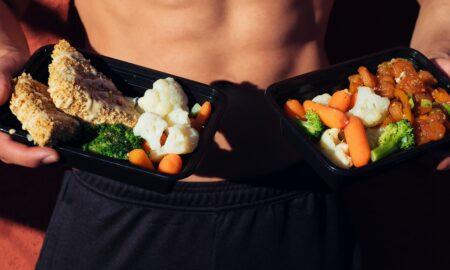
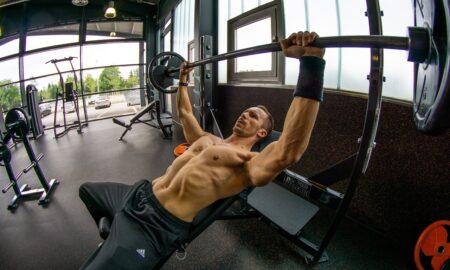
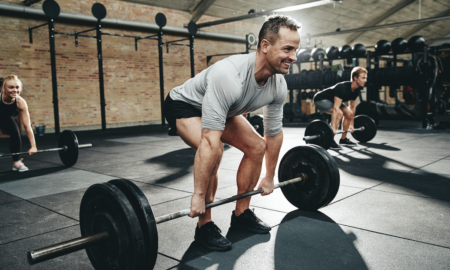
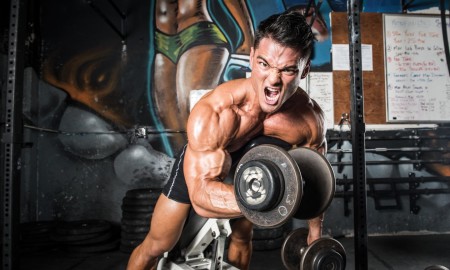

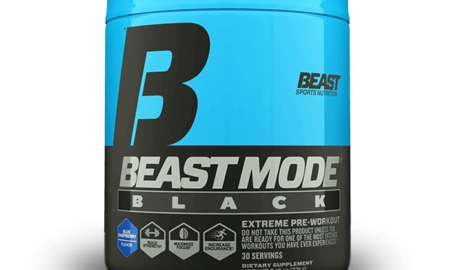
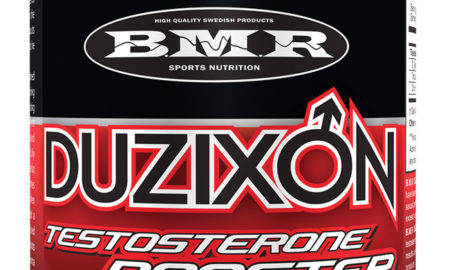
You must be logged in to post a comment Login